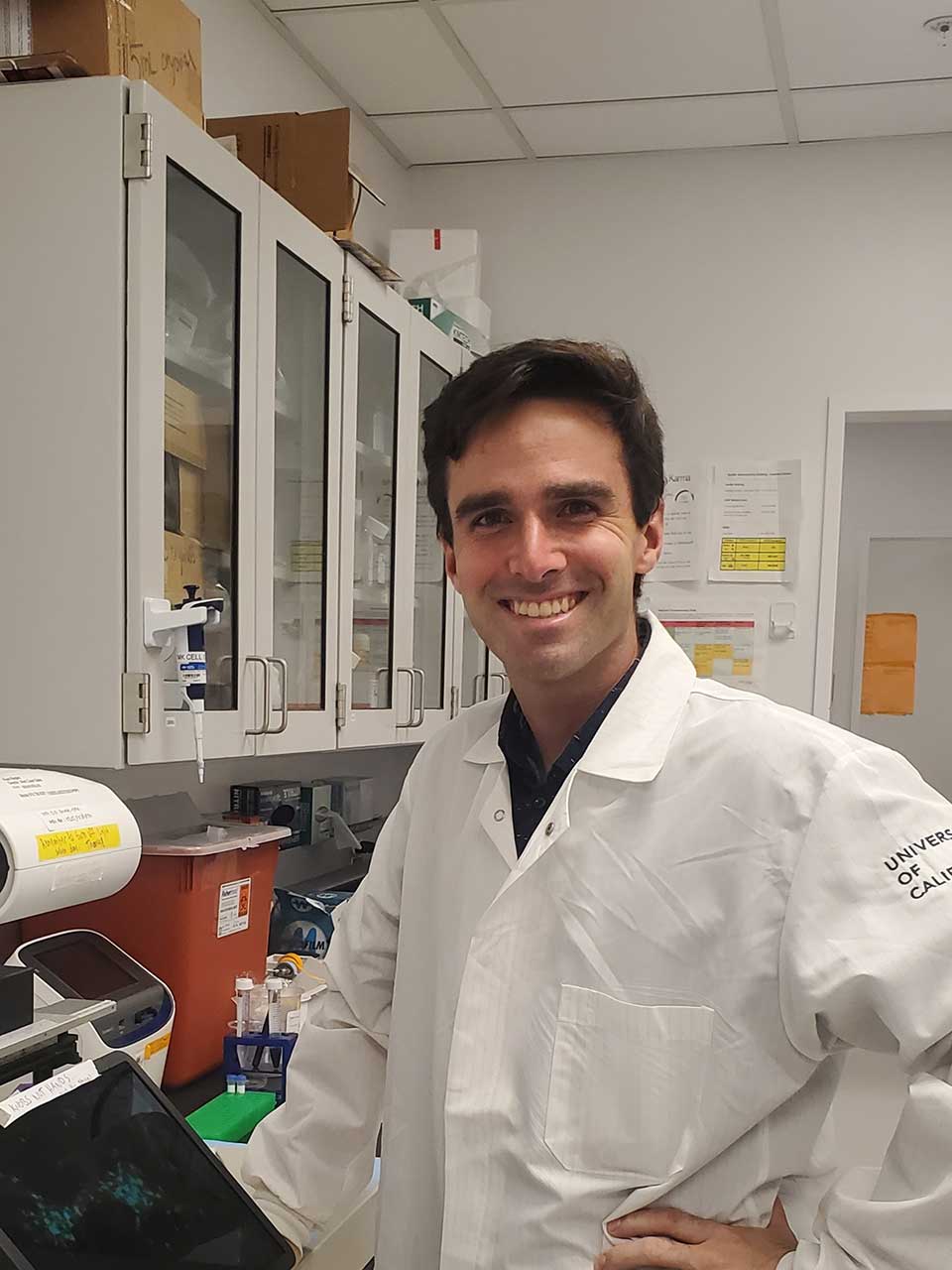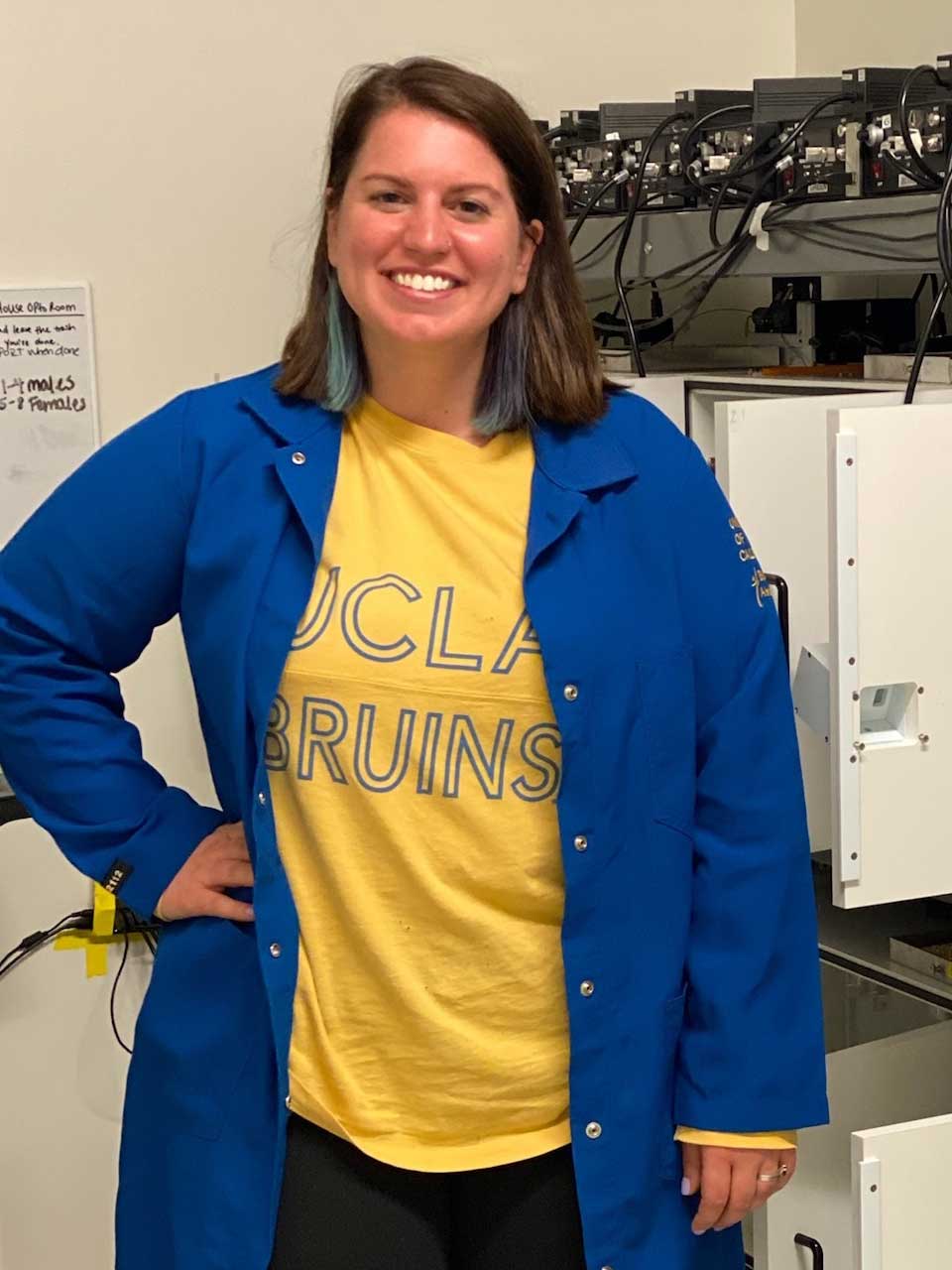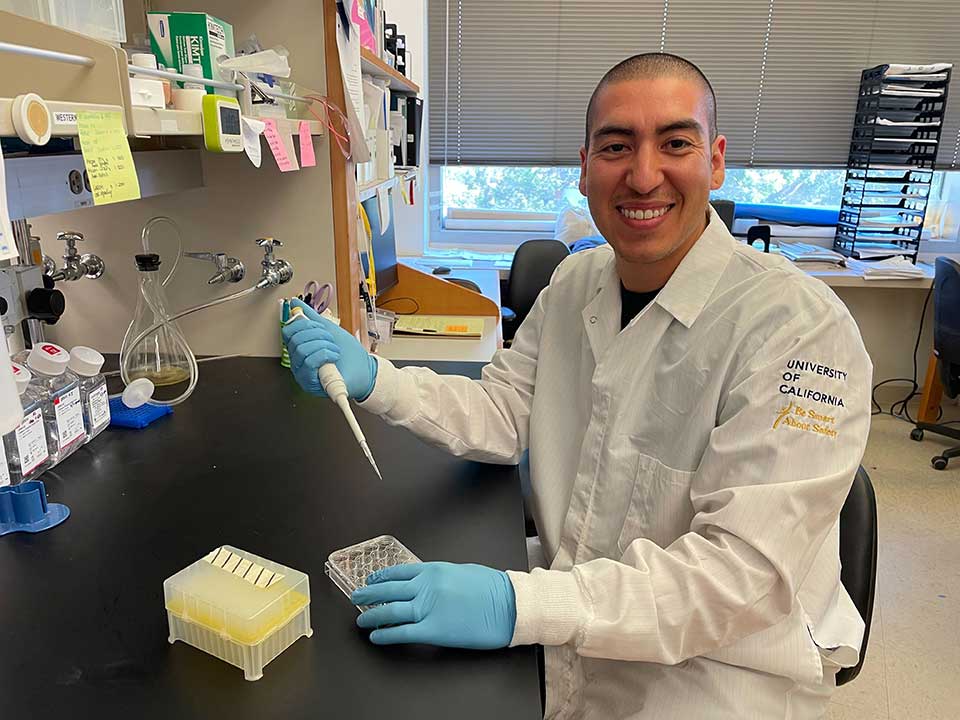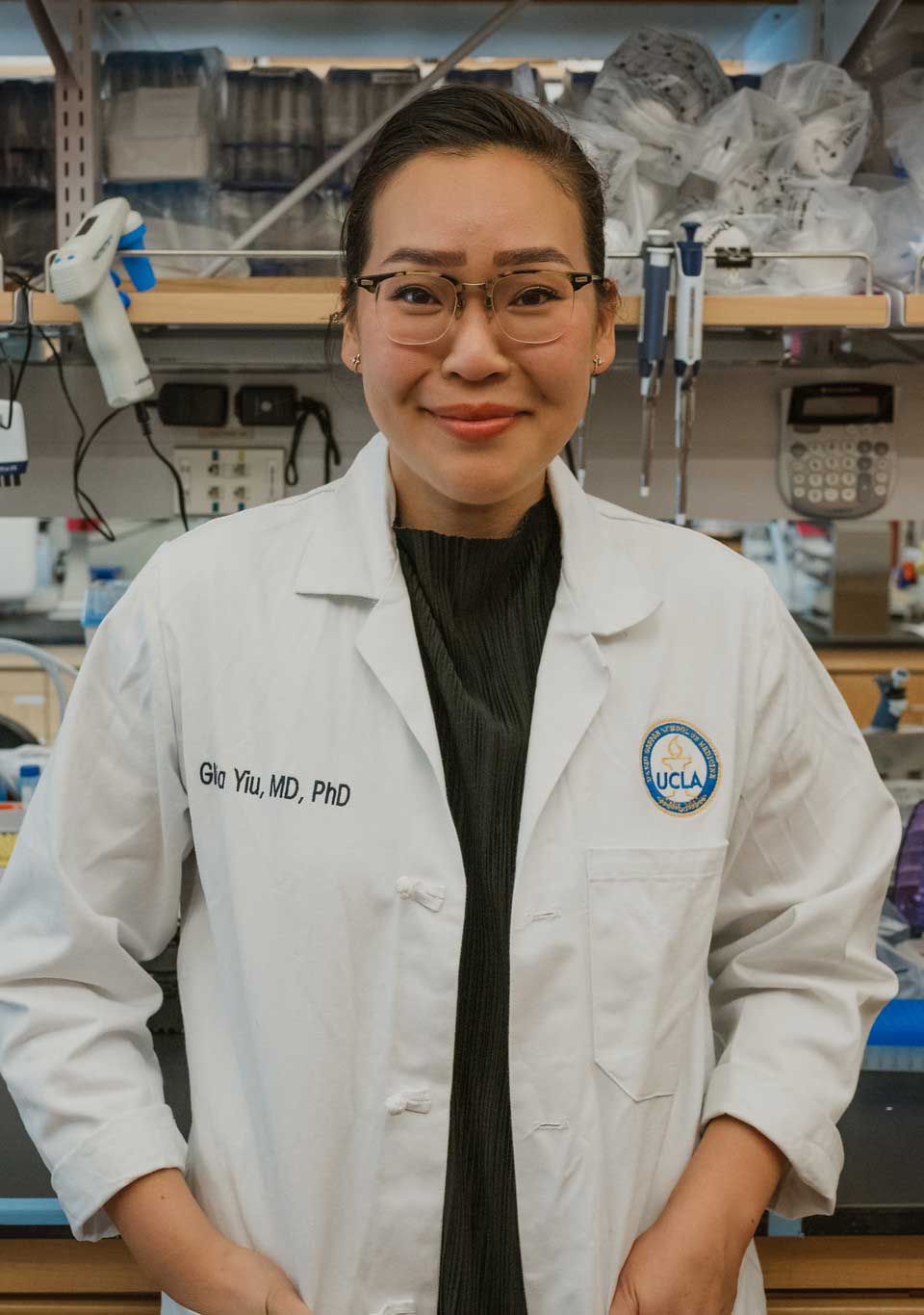
Fall 2022 Newsletter
Announcing the 2022 Fellows!
Emily Aery Jones, Ph.D.
For training at Stanford University School of Medicine with Dr. Lisa Giocomo
Our brains can learn new information, consolidate it, and then adapt it when information changes. By studying how the healthy brain accomplishes these tasks, we can better understand how to rescue function in patients with memory loss. Emily investigates how neurons firing in a sequence could enable the brain to learn and remember paths through a maze. Her long-term goal is to discover how this learning mechanism goes awry in diseases like Alzheimer’s and epilepsy.

Donovan Argueta, Ph.D.
For training at University of California, Irvine, School of Medicine with Dr. Kalpna Gupta
Pain plays a crucial role in survival, alerting us to injury, illness, or danger, but uncontrolled and intractable pain remains a major concern in modern medicine. Individuals living with Sickle Cell Disease, or SCD, the most common inherited blood disorder, often experience chronic pain as early as infancy and bouts of extreme acute pain arising from occlusion of blood vessels. Current strategies to address pain in SCD involve opioids, but this approach remains suboptimal due to risk of tolerance, abuse, and exacerbated pain. Palmitoylethanolamide, or PEA, has been identified as a promising target for SCD pain. PEA is an endogenous lipid mediator with demonstrated anti-inflammatory and analgesic effects in osteoarthritis, diabetic neuropathy, endometriosis, and spinal cord injury. Donovan aims to understand the role of PEA in addressing SCD pain and its underlying pathobiology.

Elisabet Bjanes, Ph.D.
For training at University of California, San Diego School of Medicine with Dr. Victor Nizet
Multidrug-resistant bacterial infections are an exigent threat to human health, resulting in 1.3 million deaths annually. The development of new antibiotics has dwindled in recent decades, while advances to vaccine technology have exploded to include the application of nanotechnology in pre-clinical formulations. Elisabet’s research combines stable gold nanoparticles with immunogenic outer membrane vesicles from the opportunistic multidrug-resistant pathogen Acinetobacter baumannii to fabricate a vaccine that protects mice against pneumonia and disseminated sepsis. Elisabet’s long-term goal is to contribute to the successful development of nanoparticle vaccines effective against multidrug-resistant pathogens.

Gary Dixon, Ph.D.
For training at University of California, San Francisco, School of Medicine with Dr. Martin Kampmann
Despite decades of research on Alzheimer’s disease and related dementias, the molecular events that lead to disease are still poorly understood. Further investigation of disease-associated proteins such as tau will help bridge these gaps in knowledge and bring us closer to a cure. Using unbiased functional genomics, Gary aims to uncover the mechanisms for how tau directly regulates epigenetic states and how loss of this function or gain of a related toxic function may lead to disease.

Jacqueline Giovanniello, Ph.D.
For training at David Geffen School of Medicine at University of California, Los Angeles, with Drs. Kate Wassum & Lara Ray
Our brains use two strategies to guide our behaviors: goal-directed actions, which require us to prospectively consider a decision’s outcome, and habits, which are more reflexive. Overreliance on habits contributes to a range of psychiatric and neurodegenerative disorders, including addiction. Exposure to stress is a contributing factor to many of these disorders and is known to promote the development of habits. Jackie seek to uncover the neural circuit mechanisms that allow stress to promote habits, as well as strategies for reversing this effect and restoring goal-directed behavior. This information will guide future work into developing improved treatment approaches for those with conditions exacerbated by stress and marked by maladaptive habits.

Matthew Romero, Ph.D.
For training at David Geffen School of Medicine at University of California, Los Angeles, with Dr. April Pyle
Obesity affects nearly 2 billion people worldwide. Associated with premature mortality, obesity is also a co-morbidity for a host of other diseases. Exercise is a powerful tool that can be used as both a preventative measure as well as part of a treatment strategy that aids in the fight against obesity and its comorbidities. Matt’s work seeks to understand how exercise confers its health-promoting effects by focusing on the epigenome. Using a combination of exercise, genomics and CRISPR technologies, Matt aims to identify novel epigenetic targets that can be used as potential therapies to combat obesity.

Benjamin Waldman, Ph.D.
For training at Stanford University School of Medicine with Dr. Jan Carette
Every nucleated cell in our body has the remarkable ability to detect and fight against viral infection using a cellular self-defense system activated by small signaling molecules called interferons. Interferons stimulate expression of hundreds to thousands of genes, many of which have unknown or poorly understood functions. Ben’s research focuses on understanding the requirements for interferon signaling triggered by viral infection and on characterizing the targets of individual interferon-stimulated genes through pooled genetic screening. Ben hopes his research will further advance our basic understanding of this central immune signaling pathway and lead to novel antiviral therapies in the future.

Gloria Yiu, M.D., Ph.D.
For training at David Geffen School of Medicine at University of California, Los Angeles with Dr. Gay Crooks
Over 20 million Americans live with an autoimmune disease. For decades, scientists have known that RORγt is a critical molecule for cells that are bad actors in many autoimmune diseases. The major roadblock in testing therapeutic inhibition of RORγt in patients stems from studies in mice – where mice that lack RORγt are predisposed to developing cancers. But it remains unclear if what is seen in mice predicts what is seen in patients. As a rheumatologist that treats patients with autoimmune diseases, Gloria seeks to unravel the species-specific mechanisms of how RORγt affects T cell development. This work would elucidate the feasibility of targeting RORγt for her patients.
